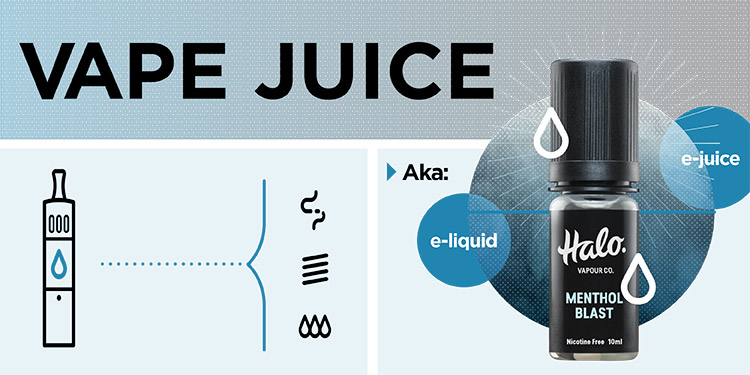One thing old timers (like me?) in the vape industry have had to deal with is the continual change in the vocabulary of vaping.
Vape is increasingly replacing the word e-cigarette, tanks have come to be used instead of clearomiser – and hardly anyone talks about atomisers any more. (You can find out more about these terms in my glossary here. )
The latest trend is the use of the word vape juice, which is rapidly catching up with the term e-liquid. Find out more about vape juice with this infographic by UK vape company E-Cigarette Direct.

Oils v. Vape Juice v. E-Liquid
Ultimately, it doesn’t matter whether you use the word vape juice or e-liquid. But where semantics could be more important is with the word oils.
The word oils aren’t commonly used by experienced vape users, but they are commonly used by those less au-fait with the vocabulary of vaping. The problem is that while vaping is considered by be around 95% safer than smoking tobacco cigarettes, that doesn’t apply to certain oils – specifically essential oils that have been dissolved in an oily solvent.
In contrast to e-liquid, vaporising these oils could potentially lead to serious health problems. With the disruptive vaping industry constantly on the attack, it’s important not to create further confusion with the use of terms like this.
What’s in vape juice?
We’re often told that we don’t know what’s in vape juice. In fact, the ingredients used are fairly simple, and vape expert Professor Siegel has pointed out in the past that we know more about what’s in vapour than we do about tobacco smoke.
The ingredients in vapour consist of four elements: Propylene Glycol, Vegetable Glycerine, Nicotine and flavourings.
Propylene glycol and vegetable glycerine are both well studied and considered GRAS (generally recognised as safe). You’ll find them in many everyday and medical products, including asthma inhalers. These two ingredients are responsible for the vapour that carries the nicotine in vape juice, although they are subtly different. Propylene glycol provides less vapour, carries flavour better and gives a better throat hit, while vegetable glycerine is sweeter and provides more vapour.
Nicotine is addictive, although probably not as addictive as when combined with other elements in tobacco smoke, but is not the cause of smoking diseases.
The only question mark is over flavourings. Public Health England consider vaping to be 95% safer than smoking – the 5% they are unsure about comes from the use of flavourings. If you are at all worried about the use of flavourings, make sure you buy from a supplier which tests their e-liquid for impurities.
Storing Vape Juice
Over the long term vape juice can lose colour and flavour. We know from Professor Houezec that is due to exposure to light and air, which can cause oxidation. The good news is that this doesn’t change its effects, but for best results always store your liquid in a cool dark place. This can include your fridge or even your freezer!
Steeping E-Liquid
A good e-juice can improve with time! This process is caused steeping, and some vapers attempt to speed up the process by shaking e-liquid or exposing it to air. Steeping works better with some e-liquids than others, but if flavour is important for you it’s well worth experimenting.







